Blackberry Creek in Bliss Woods:
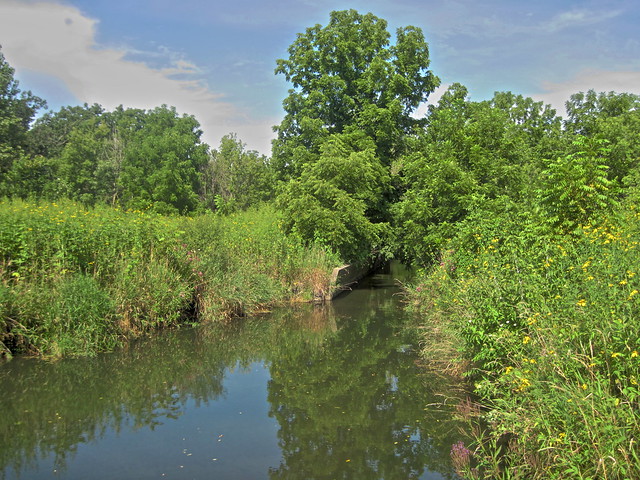
For me, birding is not so much a competitive sport, but rather a pleasurable pastime that has provided me with insights into the natural world and sensitivity to the fragility of the web of life. More than a lone pursuit, I enjoy sharing the experience with others.
For 65 years I have kept a life list of bird species seen, but generally do not expend a great deal effort to chase after rare birds. This probably classifies me as more of a "birdwatcher" than a competitive "birder." Yet, any newly seen or photographed species is cause for celebration.
My hobby of bird photography started late, in 2008 after my son-in-law gave me his first generation Canon Rebel DSLR. Now, it is still great to see a new species, but I'm striving to photograph as many birds on my life list as possible. About 50% would seem to be a realistic goal-- I've recorded sightings of 582 species in the ABA area (continental US and Canada) but so far have photographed only approximately 250 to 260 species. (I say approximate because that is how many photos are in my "Life Birds Photographed" set on FLICKR-- there are a few duplicates that I need to weed out).
Lately the rate of adding to my list of life birds photographed has slowed considerably. I do not plan any more pelagic trips, and most of our travel is between our two homes in Florida and Illinois. Yet, Mary Lou and I jumped at the chance to add a species soon after arriving in Illinois in mid-August, when we learned that two pairs of Red-headed Woodpeckers were nesting not far away. Marion, a local birding friend, guided us to their breeding territory in Hannaford Woods. She has been monitoring their nests for at least two seasons. I would never have been able to find their nests on my own.
A well-maintained barn is located near the entrance to the woodland.

The entrance path follows the border between the mature woodland and former agricultural fields, now converted and managed as a tallgrass prairie.
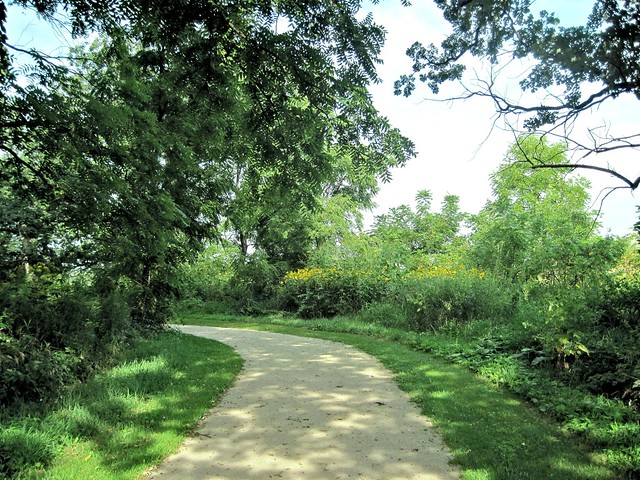
The trail leads into the woods.

Not far in, we encountered the first Red-headed Woodpecker we have seen in more than 15 years since when we lived in New Mexico. It was perched atop the hole-ridden snag that served as its nesting site, which is located on the other side of the trunk.
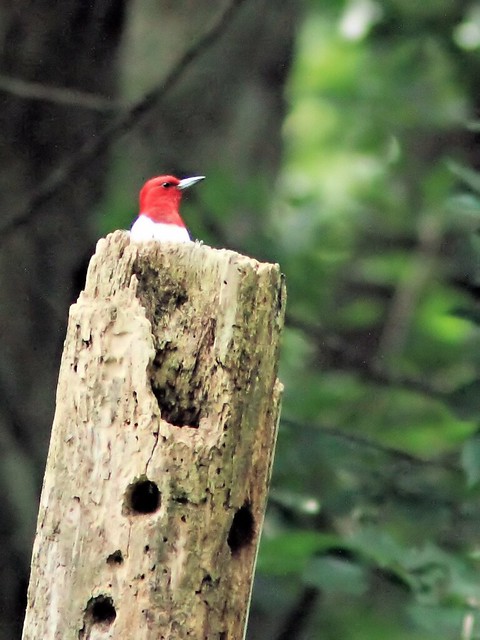
We planned to observe this nest later, on our way back out of the woods. We proceeded to the second nest which was visible from the trail in another similar dead tree. It is the bottom hole of the three large excavations (Click to enlarge any of these photos).
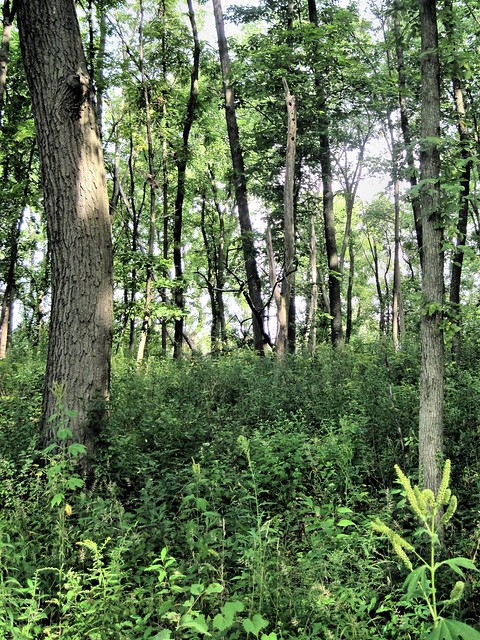
Within minutes, one of the parent birds arrived with an insect.
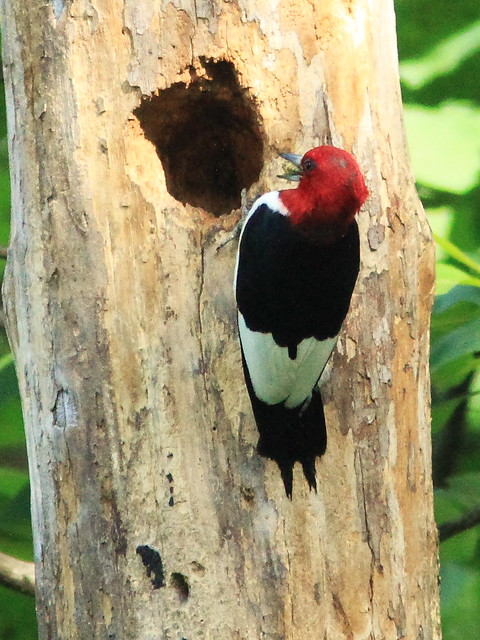
The nestlings were silent, but obviously hungry. The adult emerged with an empty bill in seconds.
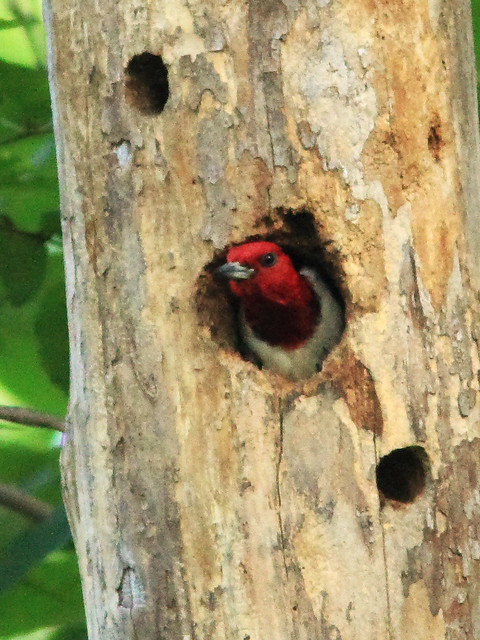
The parents kept returning with food every 4 or 5 minutes. They provided glorious photo opportunities.
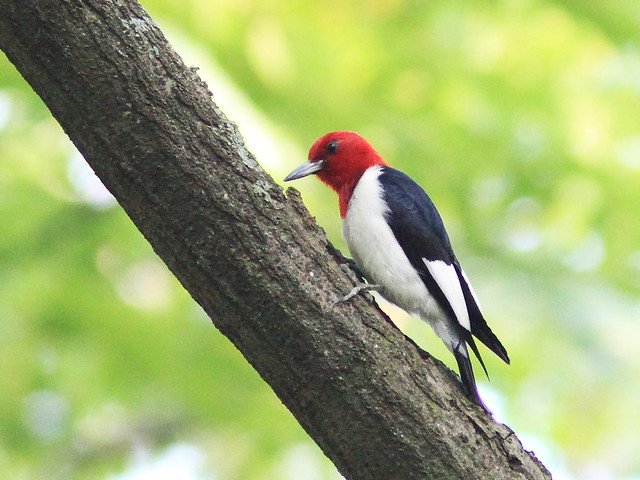
They were good housekeepers, often exiting to discard fecal sacs or detritus such as this unidentified object.
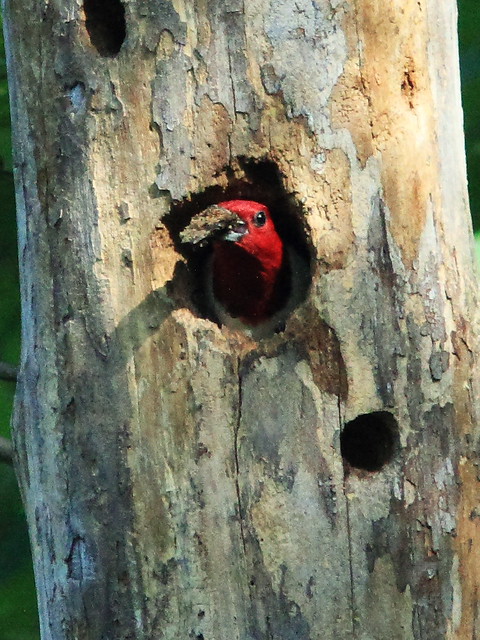
This was their second clutch of the year, said to be a bit unusual at this latitude. Our host feared that the first brood may have failed but was overjoyed when an immature bird visited the location. They were excellent parents, indeed! In typical fashion, this species strips off bark in search of insect prey. Their nest tree is often entirely devoid of bark, perhaps to make it more difficult for mammalian predators to climb up.
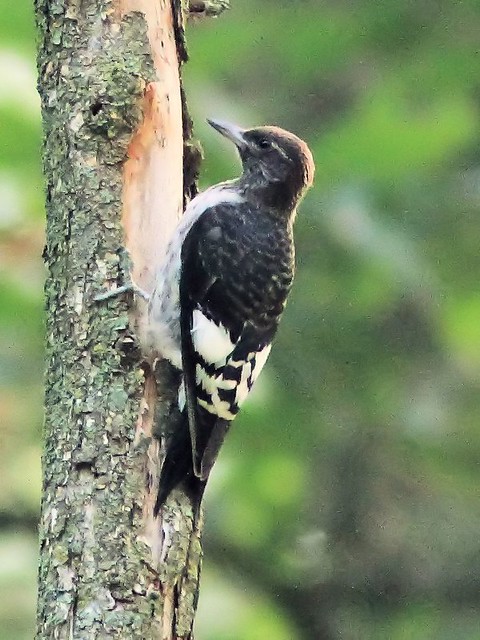
I will not bore the reader by showing all of the 80 or so photos that I simply could not make myself discard out of some 130 originals. However, the second nest, which we reached by bushwhacking through blackberry and poison ivy patches, was every bit as exciting to watch. It too contained young nestlings. Marion called the presumed male "Baldy" because a large portion of his head has lacked feathers over the past two years. Here, Baldy poses on top of the nest tree.

Here is Baldy's mate, so identified by her behavior, as the male does most of the excavating and in the (undocumented) belief that only the male carries away fecal sacs. Normally the sexes are similar, but Baldy's head distinguishes him.
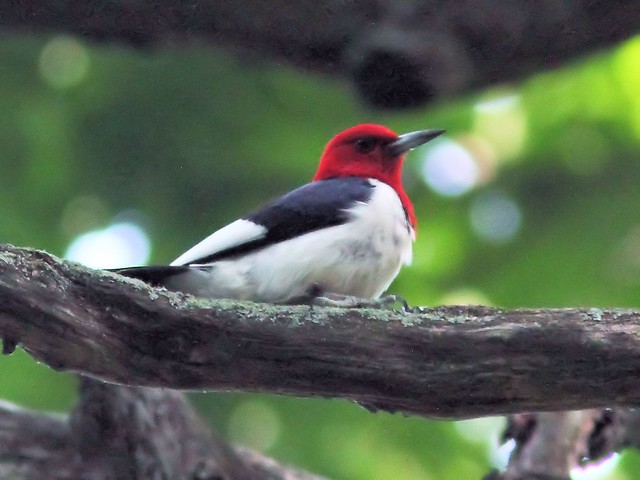
Baldy disposes of a fecal sac. His bald spot is best seen from his right side.
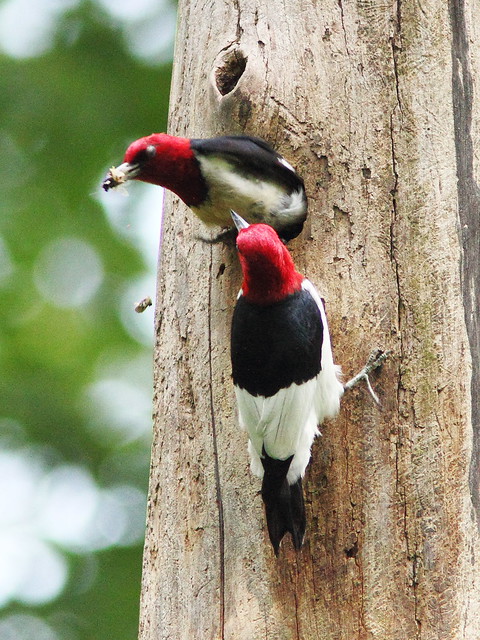
At Bliss Woods, a Red-tailed Hawk sailed effortlessly overhead.
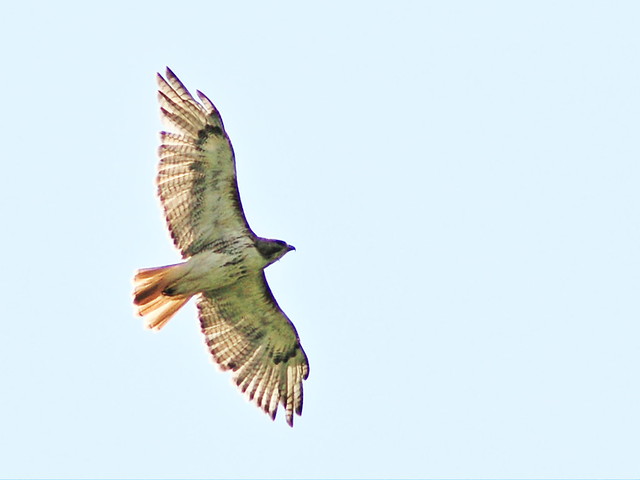
A Northern Cardinal had not finished molting into new crest feathers.
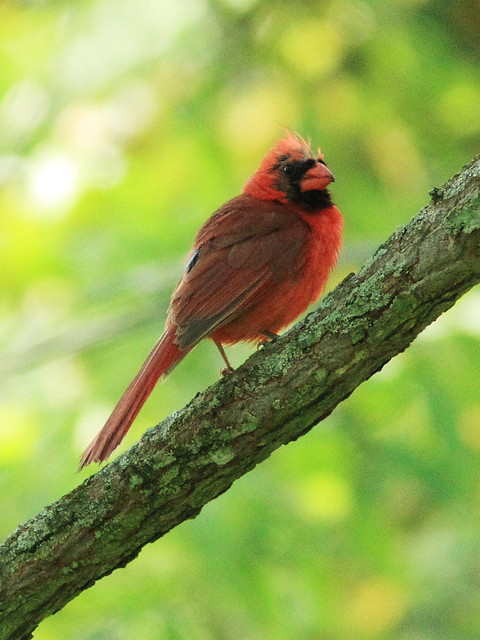
Several Ruby-throated Hummingbirds were migrating through.
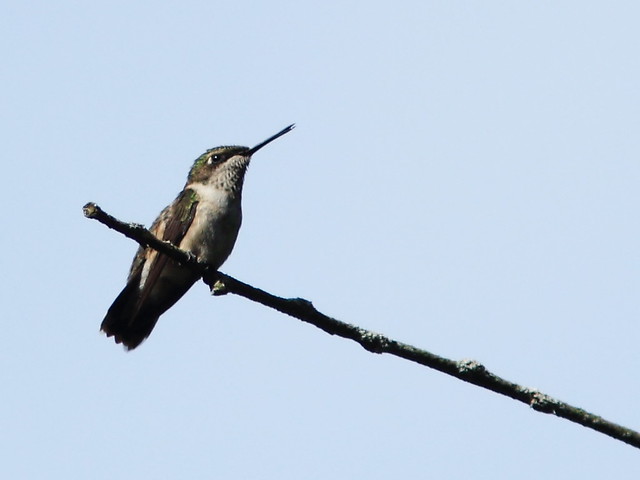
Numerous Eastern Wood-Pewees whistled plaintively: "Pee-oh-wee!"
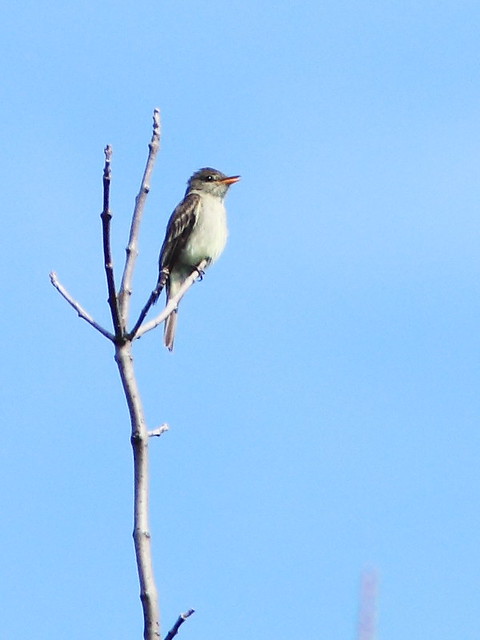
There were many immature American Robins among the huge flocks of this species.
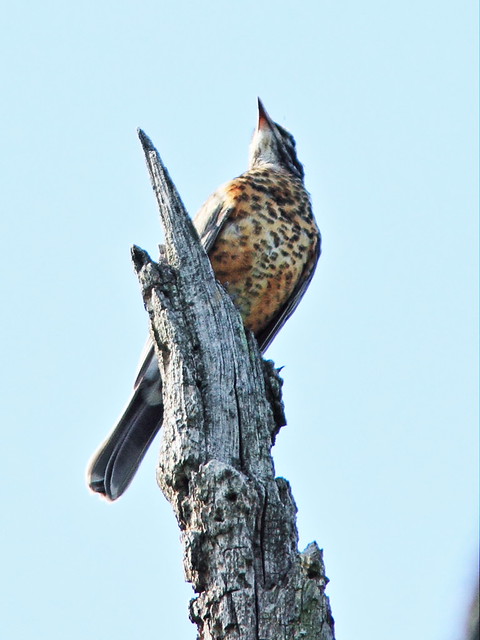
The highlight of this visit to Bliss Woods was an Olive-sided Flycatcher, readily identified from a distance by its habit of sitting on the highest dead branch of a huge oak, and returning to the same spot repeatedly after fly-catching forays.
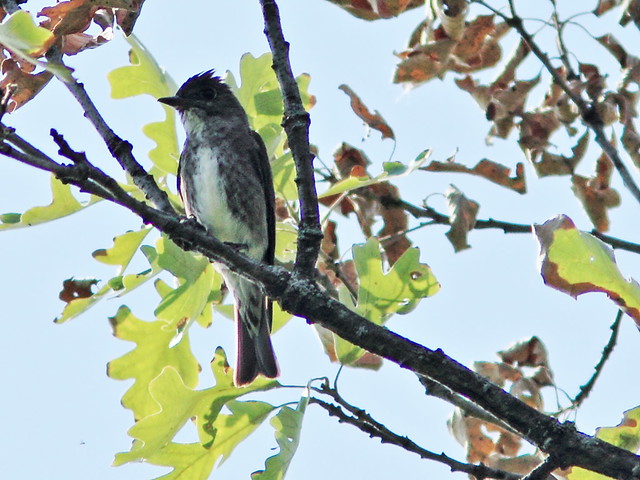
Its unmistakable black vest seals the identification.
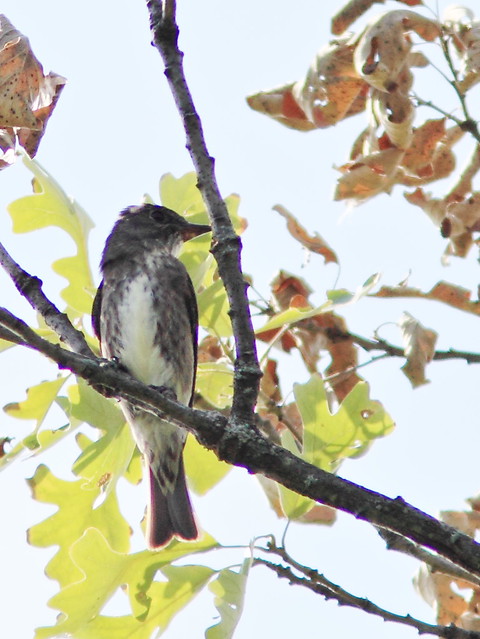
A curious Thirteen-lined Ground Squirrel peeped up from the safety of its burrow. I was able to approach it quite closely. Click on the image for larger view to see my reflection (hat, camera and monopod) in its eye.
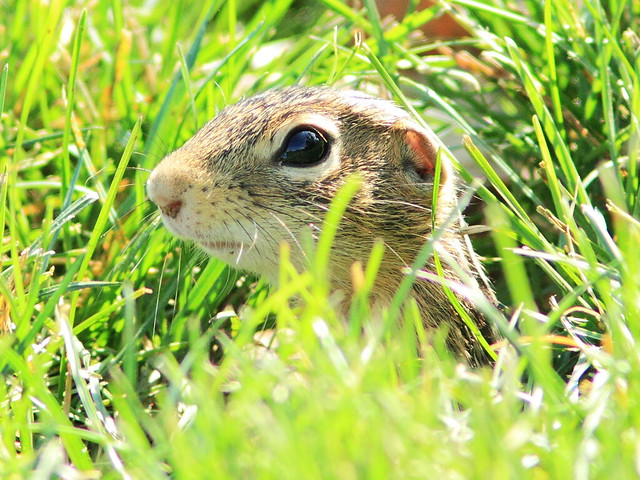
haven't seen a red-head since leaving wisconsin many years ago. so pretty! your # of birds seen is really impressive.
ReplyDeleteHI Ken That was wonderful that your friend was able to take you to photograph these beautiful birds, all well shot and I love the Squirrel at the end also. Seems a lovely place to go birding
ReplyDeleteWow, what a nice place for birding. I love the Redheaded Woodpeckers Great photos!
ReplyDeleteOh my gosh. This is absolutely wonderful. Amazing post. I just loved the early paragraph where you described what birding means to you (as in not a competitive sport, but a personal joy and one to share wherever you are)because it is this attitude on the part of great birders/bird watchers like yourself that gives me help and hope and the courage to share my little pictures. All that being said, I am so glad you found this remarkable place and got the rare red-head...and all those other beauties besides. I loved every picture...Bliss indeed!
ReplyDeleteWonderful shots of such lovely birds.
ReplyDeleteA great series of photos again but for me the woodpeckers are the stars!- How great to be able to watch both pairs at their nest holes!
ReplyDeleteKen, simply superb!
ReplyDeleteI have been pleasantly surprised during my bird atlasing efforts to discover a much higher number of breeding Red-headed Woodpeckers in central Florida than was anticipated. Great photographs!
It's comforting to discover someone with a "bird watching" philosophy similar to my own!
Such a beautiful woodland trail. These photos are wonderful, especially the ones of the woodpeckers and their nest.
ReplyDeleteLove your philosophy on birding Ken, and I would like to take this opportunity to thank you for your conservation contributions.
ReplyDeleteIncredible shots of the nesting Red-headed Woodpeckers! Wonder what the unidentified object being removed from the nest is? Looks like poop encrusted bark chips to me ;-)
I've only seen a Redheaded Woodpecker a handful of times. These are fantastic shots! Love your hummingbird, too!
ReplyDeleteGorgeous shots! The woodpecker is very beautiful.
ReplyDeleteOlive-sided Flycatcher...wonderful! The woodies are really great image shares~
ReplyDelete